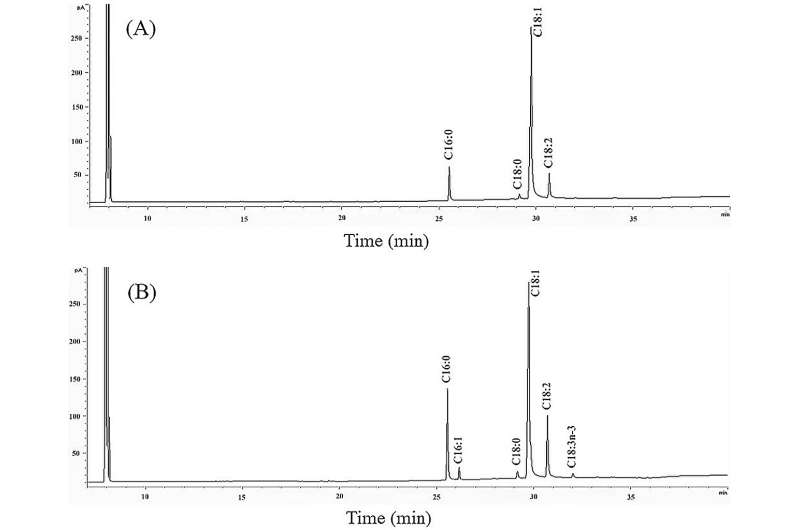This article has been reviewed according to Science X's editorial process and policies. Editors have highlighted the following attributes while ensuring the content's credibility:
fact-checked
proofread
New authentication method for the identification of β-sitosterol in edible oils

In a study published in the journal Food Quality and Safety on 23 August 2023, researchers from Zhejiang University introduced a methodology designed to scrutinize the levels of β-sitosterol present in edible oils.
With a primary focus on virgin camellia oil (VCO) and virgin olive oil (VOO), this novel approach holds promise for transforming authentication processes in the food sector. Instead of relying on the conventional methods, the team adeptly harnessed the power of both gas chromatography/mass spectrometry (GC/MS) and gas chromatography/flame ionization detector (GC/FID).
What makes this methodology particularly commendable is its ability to effectively bypass some of the traditionally cumbersome stages of analysis. Specifically, it eradicates the need for processes such as solid-phase extraction cartridges and thin-layer chromatography. Furthermore, the method has rendered derivatization—a previously crucial step in the determination process—wholly unnecessary.
The culmination of these advancements results in a streamlined approach that markedly accelerates the procedure, while simultaneously minimizing the potential for errors due to reduced sample handling. The study also ventured beyond just introducing a new method. Delving deep into the comparative analysis of β-sitosterol in VCO and VOO, the findings were enlightening.
VCO was found to contain a range of 14.1–30.2 mg/100 g of β-sitosterol, while VOO displayed a substantially higher concentration, ranging from 94.3 to 173.2 mg/100 g. This pronounced difference not only positions VOO as an elite source of β-sitosterol within the edible oil landscape but also emphasizes the broader health implications of the findings.
Recognized for its potential health benefits, including anti-inflammatory, anti-ulcerative, and anti-tumor properties, β-sitosterol's elevated presence in VOO accentuates the oil's nutritional and therapeutic significance. Furthermore, the disparity in β-sitosterol concentrations between VCO and VOO provides a unique fingerprint for each oil. As such, β-sitosterol can be leveraged as an instrumental marker in verifying the authenticity of these oils.
The evolution of this method paves the way for its potential use in authenticating a broader spectrum of edible oils. In an era where global health awareness is escalating, understanding the precise composition of edible oils becomes instrumental, empowering consumers to make enlightened choices.
The research undertaken by this team transcends merely addressing food fraud; it signifies a commitment to ensuring consumers reap the health advantages intrinsic to genuine VCO and VOO. This study lays a robust groundwork for subsequent investigations and implementations within the food sector.
More information: Yang Li et al, Qualitative and quantitative analysis of β-sitosterol marker in virgin camellia oil and virgin olive oil, Food Quality and Safety (2023). DOI: 10.1093/fqsafe/fyad034
Provided by TranSpread




















